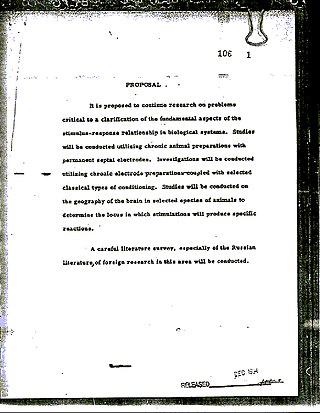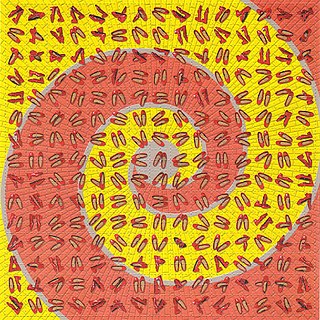
Lysergic acid diethylamide, commonly known as LSD, and known colloquially as acid or lucy is a potent psychedelic drug. Effects typically include intensified thoughts, emotions, and sensory perception. At sufficiently high dosages LSD manifests primarily mental, visual, and auditory hallucinations. Dilated pupils, increased blood pressure, and increased body temperature are typical. Effects typically begin within half an hour and can last for up to 20 hours. LSD is also capable of causing mystical experiences and ego dissolution. It is used mainly as a recreational drug or for spiritual reasons. LSD is both the prototypical psychedelic and one of the "classical" psychedelics, being the psychedelic with the greatest scientific and cultural significance. LSD is synthesized as a solid compound, typically in the form of a powder or a crystalline material. This solid LSD is then dissolved in a liquid solvent, such as ethanol or distilled water, to create a solution. The liquid serves as a carrier for the LSD, allowing for accurate dosage and administration onto small pieces of blotter paper called tabs. LSD is typically either swallowed or held under the tongue. In pure form, LSD is clear or white in color, has no smell, and is crystalline. It breaks down with exposure to ultraviolet light.

Project MKUltra was an illegal human experimentation program designed and undertaken by the U.S. Central Intelligence Agency (CIA) and intended to develop procedures and identify drugs that could be used during interrogations to weaken people and force confessions through brainwashing and psychological torture. It began in 1953 and was halted in 1973. MKUltra used numerous methods to manipulate its subjects' mental states and brain functions, such as the covert administration of high doses of psychoactive drugs and other chemicals without the subjects' consent, electroshocks, hypnosis, sensory deprivation, isolation, verbal and sexual abuse, and other forms of torture.

An amphibious transport dock, also called a landing platform dock (LPD), is an amphibious warfare ship, a warship that embarks, transports, and lands elements of a landing force for expeditionary warfare missions. Several navies currently operate this kind of ship. The ships are generally designed to transport troops into a war zone by sea, primarily using landing craft, although invariably they also have the capability to operate transport helicopters.

A dock landing ship is an amphibious warfare ship with a well dock to transport and launch landing craft and amphibious vehicles. Some ships with well decks, such as the Soviet Ivan Rogov class, also have bow doors to enable them to deliver vehicles directly onto a beach. Modern dock landing ships also operate helicopters.

The psychedelic drug lysergic acid diethylamide (LSD) was first synthesized on November 16, 1938, by the Swiss chemist Albert Hofmann in the Sandoz laboratories in Basel, Switzerland. It was not until five years later on April 19, 1943, that the psychedelic properties were found.

ALD-52, also known as 1-acetyl-LSD, has chemical structural features similar to lysergic acid diethylamide (LSD), a known psychedelic drug. Similarly, ALD-52 has been reported to produce psychoactive effects, but its pharmacological effects on humans are poorly understood. Given its psychoactive properties, it has been reported to be consumed as a recreational drug, and the purported first confirmed detection of the substance on the illicit market occurred in April 2016.
A local service district (LSD) was a provincial administrative unit for the provision of local services in the Canadian province of New Brunswick. LSDs originally covered areas of the province that maintained some services but were not made municipalities when the province's former county municipalities were dissolved at the start of 1967; eventually all of rural New Brunswick was covered by the LSD system. They were defined in law by the Local Service Districts Regulation of the Municipalities Act. In 2017, the Municipalities Act was replaced by the Local Governance Act, which continued the Local Service Districts Regulation.

ETH-LAD, 6-ethyl-6-nor-lysergic acid diethylamide is an analogue of LSD. Its human psychopharmacology was first described by Alexander Shulgin in the book TiHKAL. ETH-LAD is a psychedelic drug similar to LSD, and is slightly more potent than LSD itself, with an active dose reported at between 20 and 150 micrograms. ETH-LAD has subtly different effects to LSD, described as less demanding.

N-Morpholinyllysergamide (LSM-775) is a derivative of ergine. It is less potent than LSD but is reported to have some LSD-like effects at doses ranging from 75 to 700 micrograms and a shorter duration. There are fewer signs of cardiovascular stimulation and peripheral toxicity with LSM-775 compared to LSD.

Albert Hofmann was a Swiss chemist known for being the first to synthesize, ingest, and learn of the psychedelic effects of lysergic acid diethylamide (LSD). Hofmann's team also isolated, named and synthesized the principal psychedelic mushroom compounds psilocybin and psilocin. He authored more than 100 scientific articles and numerous books, including LSD: Mein Sorgenkind. In 2007, he shared first place with Tim Berners-Lee on a list of the 100 greatest living geniuses published by The Daily Telegraph newspaper.

Lysergic acid 2,4-dimethylazetidide (LA-SS-Az, LSZ) is an analog of LSD developed by the team led by David E. Nichols at Purdue University. It was developed as a rigid analog of LSD with the diethylamide group constrained into an azetidine ring in order to map the binding site at the 5-HT2A receptor. There are three possible stereoisomers around the azetidine ring, with the (S,S)-(+) isomer being the most active, slightly more potent than LSD itself in drug discrimination tests using trained rats.

Methylisopropyllysergamide is an analogue of LSD that was originally discovered by Albert Hofmann at Sandoz during the original structure-activity research into LSD. It has subsequently been investigated in more detail by the team led by David E. Nichols at Purdue University. Methylisopropyllysergamide is a structural isomer of LSD, with the alkyl groups on the amide nitrogen having been subjected to a methylene shuffle. MIPLA and its ethylisopropyl homologue are the only simple N,N-dialkyl lysergamides that approach the potency of LSD itself, being around 1/3-1/2 the potency of LSD, while all other dialkyl analogues tested are only around 1/10 as potent as LSD, although some N-monoalkyl lysergamides such as the sec-butyl and t-butyl derivatives were also found to show an activity profile and potency comparable to LSD, and the mono-isopropyl derivative is only slightly weaker than MIPLA. Apart from its lower potency, the hallucinogenic effects of methylisopropyllysergamide are similar to those of LSD itself, and the main use for this drug has been in studies of the binding site at the 5-HT2A receptor through which LSD exerts most of its pharmacological effects.

Lysergic acid 2-butyl amide (2-Butyllysergamide, LSB) is an analogue of LSD originally developed by Richard Pioch at Eli Lilly in the 1950s, but mostly publicised through research conducted by the team led by David E. Nichols at Purdue University. It is a structural isomer of LSD, with the two ethyl groups on the amide nitrogen having been replaced by a single sec-butyl group, joined at the 2-position. It is one of the few lysergamide derivatives to exceed the potency of LSD in animal drug discrimination assays, with the (R) isomer having an ED50 of 33nmol/kg for producing drug-appropriate responding, vs 48nmol/kg for LSD itself. The corresponding (R)-2-pentyl analogue has higher binding affinity for the 5-HT1A and 5-HT2A receptors, but is less potent in producing drug-appropriate responding, suggesting that the butyl compound has a higher efficacy at the receptor target. The drug discrimination assay for LSD in rats involves both 5-HT1A and 5-HT2A mediated components, and while lysergic acid 2-butyl amide is more potent than LSD as a 5-HT1A agonist, it is slightly less potent as a 5-HT2A agonist, and so would probably be slightly less potent than LSD as a hallucinogen in humans. The main use for this drug has been in studies of the binding site at the 5-HT2A receptor through which LSD exerts most of its pharmacological effects, with the stereoselective activity of these unsymmetric monoalkyl lysergamides foreshadowing the subsequent development of compounds such as lysergic acid 2,4-dimethylazetidide (LSZ).

Lysergic acid 3-pentyl amide is an analogue of LSD originally researched by David E. Nichols and colleagues at Purdue University. It has similar binding affinity to LSD itself as both a 5-HT1A and 5-HT2A agonist, and produces similar behavioral and physiological responses in animals with only slightly lower potency than LSD. Other isomers of this compound have also been explored, with the 1-pentylamide being around 75% the potency of LSD, while the (R)-2-pentylamide shows similar 5-HT2A binding affinity to LSD in vitro but has only around half the potency of LSD in producing drug-appropriate responding in mice, and the (S)-2-pentylamide is inactive.

2-Bromo-LSD, also known as BOL-148, is a derivative of lysergic acid invented by Albert Hofmann, as part of the original research from which the closely related compound LSD was also derived.

1P-LSD is a psychedelic drug of the lysergamide class that is a derivative and functional analogue of LSD and a homologue of ALD-52. It originated in 2015 when it appeared a designer drug sold online. It modifies the LSD molecule by adding a propionyl group to the nitrogen molecule of LSD's indole group.

1cP-LSD is an acylated derivative of lysergic acid diethylamide (LSD), which has been sold as a designer drug. In tests on mice it was found to be an active psychedelic with similar potency to 1P-LSD.

1B-LSD is an acylated derivative of lysergic acid diethylamide (LSD), which has been sold as a designer drug. In tests on mice it was found to be an active psychedelic, though with only around 1/7 the potency of LSD itself.

1V-LSD, sometimes nicknamed Valerie, is a psychotropic substance and a research chemical with psychedelic effects. 1V-LSD is an artificial derivative of natural lysergic acid, which occurs in ergot alkaloids, as well as being an analogue of LSD. 1V-LSD has been sold online until an amendment to the German NpSG was enforced in 2022 which controls 1P-LSD and now 1cP-LSD, 1V-LSD and several other lysergamides.


















